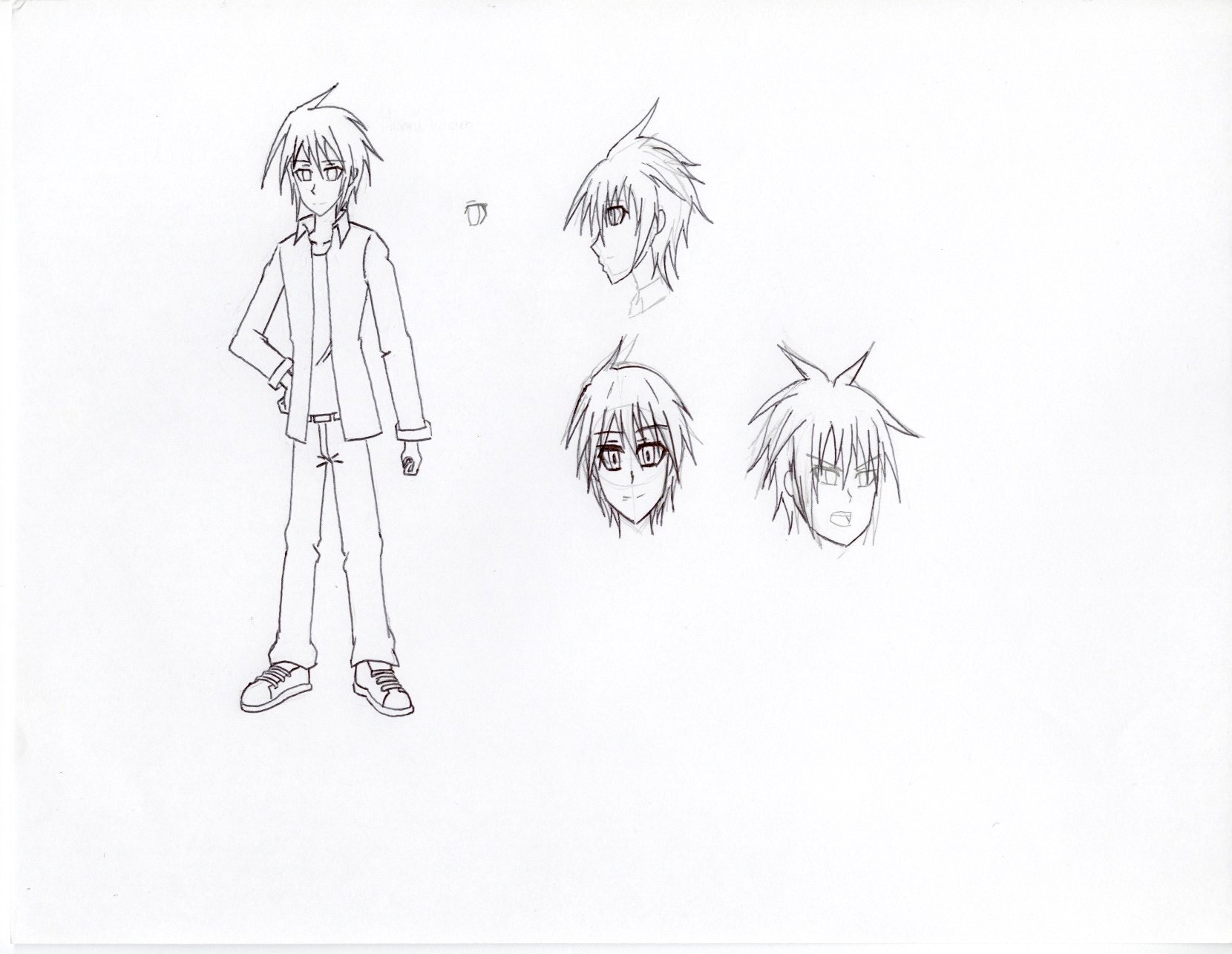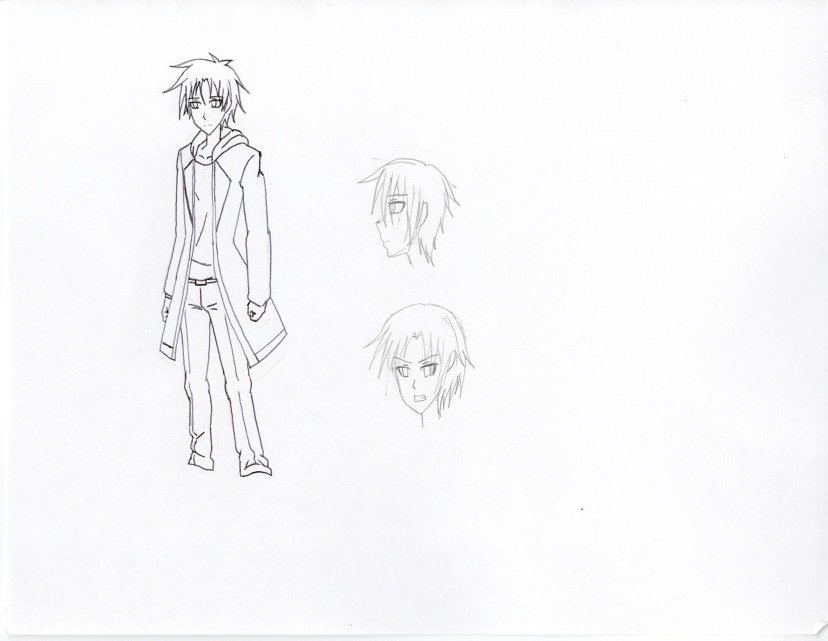The World of Nexus
Welcome to the world of Nexus, set in the futuristic city of Horizon, Japan. The story follows Hikaru Yukio, a lonely young boy shunned by society after an experiment gone wrong caused a devastating explosion that destroyed part of the city, an incident for which his father is blamed. Over the years, Hikaru has been shunned by society and faced many hardships.
Everything changes when he meets a mysterious girl named Mana and discovers the secret Zeta Base. There, Hikaru learns the incident was no accident and that someone else deliberately caused the destruction. A sinister group is unleashing monsters to terrorize the city. To stop them and clear his father’s name, Hikaru must rise as the armored warrior called Nexus.
Inspirations
Nexus was inspired by the superhero TV shows I loved as a kid, such as Kamen Rider and Power Rangers. The idea first took shape back in middle school and became one of the first stories I ever created. I spent a lot of time making sketches of characters, armor, and weapons, but struggled because I had writer’s block and found it hard to develop the story. During high school, I lost motivation to continue the project.
However, my time at Temple University rekindled my passion for Nexus. What started as a fun personal project evolved into something I wanted to develop seriously. When I faced challenges deciding how to present the design, I sought advice from my professor. He encouraged me to include Nexus as part of my series.
At first, I considered creating a comic book, but I realized that making a full issue would take too much time. Instead, I shifted the project into a concept art book, featuring character designs and key story elements to bring Nexus to life in a fresh, manageable way.
Exploration
My initial process involved researching how art books are designed by exploring examples online. During one of my art semesters, a graduate student visited our studio and shared several impressive concept art books. Among them, Spider-Man: Across the Spider-Verse – The Art of the Movie caught my eye, along with a stunning art book based on Final Fantasy that featured beautiful sketches. As I flipped through these books, I was inspired by how expertly the character designs, backgrounds, and settings were presented. This inspired me to create my concept art book to showcase my characters and share the story of Nexus with others.
The first sketches I created were the armor design for Nexus, followed by the main character himself. While sketching, I struggled to get the proportions right, especially the sizes of different parts like the legs, arms, and hands. After spending time looking at the images online for inspiration and reference, I gradually refined my drawings and developed more accurate and detailed character designs.
Concept Art
Over the years of developing this series, I created numerous concept artworks featuring characters, armor, weapons, and backgrounds to build a rich and immersive world. I began by sketching characters on paper, but later transitioned to Procreate, which allowed me to produce cleaner lines and add color, bringing the designs to life. I intentionally designed the characters with average builds, avoiding bulky or overly skinny physiques, as that style didn’t appeal to me.
Background Designs
These are designs of the cityscapes and structures featured in my concept art. The first image presents a nighttime view of Horizon City as a whole. The city’s design was inspired by a tutorial video I watched, which guided me in creating the overall landscape. While my artwork shares similarities with the video, I added unique buildings and placed a central tower to give it a distinct identity.
The second image offers a close-up view of the city, drawing inspiration mainly from Times Square. I incorporated widescreens on the buildings and added subtle futuristic elements to give it a modern, high-tech feel.
The final image depicts the Heroes’ main headquarters, the Zeta Base, built by Hikaru’s father to support his son as he prepares for upcoming threats. The design takes inspiration from various Power Rangers headquarters, influencing both the exterior and interior layouts, and showcasing the characters within this important setting.
Book Design
Finally, after completing my artwork, I began designing the Nexus book. The book contains a total of 30 pages—7 preliminary pages followed by 23 regular pages. In order to make the book, I created my artwork in Procreate and then assembled and structured the pages in Adobe InDesign.
For typography, I chose Ethnocentric for the titles and page numbers because its futuristic style complements the main plot of my series. For the body text, I used Stratos. Although it wasn’t my initial choice—I wanted something simpler—my professor helped me select Stratos, and I found the letters to be clean and smooth for the text in my pages.
The page order follows a traditional book layout. The cover page is first, followed by endpapers on pages two and three. Next come two title pages: the first with a faint title and the second showing the full title boldly. After that is the table of contents, guiding readers through the book. Pages 4 to 19 showcase character information, while pages 20 to 23 describe the city and the secret Zeta Base. The conclusion appears on page 25.
Once the layout was complete, I used Lulu.com to print the book. I encountered challenges with image resolution and ensuring the pages were correctly ordered, which took some time to fix. However, after making the necessary adjustments, I successfully had the book printed and delivered to my home.
Throughout the process, I faced struggles with the book’s structure, but learned a great deal, like how to use preliminary page numbers and incorporate endpapers to enhance the book’s appearance. Overall, creating Nexus: A Concept Art Book was an enjoyable and valuable learning experience.
Final Thoughts
After weeks of dedicated work, I was proud of every aspect of this project, from the initial sketches to the digital illustrations and final book design. What began as a personal vision has grown into a series that I can share with others.
Creating the Nexus concept art book taught me a great deal about the process of producing a real, published book. My professor’s guidance was invaluable, especially advice on adding endpapers and how to structure the book professionally. The biggest challenges were balancing the design of the concept art book with the detailed background illustrations. Despite these difficulties, I’m proud of the effort I put in and the achievement of bringing my artwork to life in a published format.








































